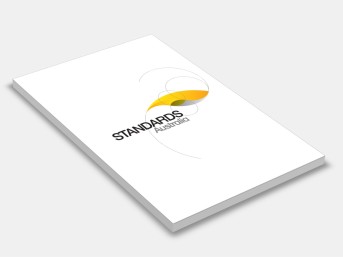AS/NZS 1576.4:2013 Scaffolding, Part 4: Suspended scaffolding
Standards Australia/Standards New Zealand
Supersedes: AS 1576.4-1991 Scaffolding, Part 4: Suspended scaffolding
Draft Designation: DR AS/NZS 1576.4Reconfirmed by: AS/NZS 1576.4:2013 REC:2024 Scaffolding, Part 4: Suspended scaffolding
The objective of this Standard is to provide manufacturers and suppliers of suspended scaffolds and accessories with requirements for the proper operation of suspended scaffolds. Unlike independent scaffolds, suspended scaffolds have various rated capacities rather than being light, medium, heavy and special duty. Modular cradles may have different rated capacities, depending on the length of cradle.
The objective of this revision is to provide designers, manufacturers and suppliers of suspended scaffolds and accessories, up-to-date information and application on the equipment used currently in the suspended scaffold industry.
This edition incorporates the following major changes to the 1991 edition:
(a) Rope factor of safety (as in AS 1418.2) has been reduced from 10 to 8 to align with European Standards. (All scaffold hoists are now imported and it is appropriate that the values used by the hoist designers be followed.)
(b) Inclusion of a test to confirm the strength of a cradle assembly as an alternative to design by analysis (Appendix G).
(c) Inclusion of mandatory secondary rope at each suspension point.
(d) The following informative elements have been added and in some instances provide similar information to AS/NZS 4576, Guidelines for scaffolding:
(i) Examples of different configurations of suspended scaffolding (Appendix A).
(ii) Safety procedures for unattended cradles (Appendix B).
(iii) Operational guidance (Appendix C).
(iv) Advice on inspection and maintenance (Appendix D).
(v) Relevant matters to be checked before installation and use (Appendix E).
(vi) Flow chart outlining the different phases of the design, supply and use of suspended scaffolds (Appendix F).
(v) Cradle strength test (Appendix G).
The terms ‘normative’ and ‘informative’ have been used in this Standard to define the application of the appendix to which they apply. A ‘normative’ appendix is an integral part of a Standard, whereas an ‘informative’ appendix is only for information and guidance.
Provides manufacturers and suppliers of suspended scaffolds and accessories with requirements to ensure the proper operation of suspended scaffolds. Reconfirmed: 2024-05-07 First published as AS 1576.4-1991. Revised and redesignated as AS/NZS 1576.4:2013.Contents:
Section 1: Scope And General
Section 2: Materials And Components
Section 3: System Design
Section 4: Installation Design And Stability
Section 5: Operational Procedures Appendices
Appendix A: Examples Of Configurations Of Suspended Scaffolding
Appendix B: Safety Procedures For Unattended Cradles
Appendix C: Operational Guidance
Appendix D: Inspection And Maintenance
Appendix E: Checklists
Appendix F: Flow Chart For The Different Phases Of A Suspended Scaffold
Appendix G: Cradle Strength Test
Scaffolding.
BD-036
ACT WorkCover; Australian Aluminium Council; Australian Chamber of Commerce and Industry; Australian Council of Trade Unions; Australian Industry Group; Business New Zealand; Construction Safety Managers and Officers Association; Department of Commerce, WorkSafe Division (WA); Department of Employment, Education and Training NT; Department of Justice, Tas; Engineered Wood Products Association of Australasia; Engineers Australia; Hire and Rental Industry Association of Australia; Housing Industry Association; Independent Chairperson; Labor Council of New South Wales; Master Builders Australia; Ministry of Business, Innovation and Employment New Zealand; New Zealand Contractors Federation; Scaffolding and Rigging Association of New Zealand; Scaffolding Association, Qld; Scaffolding, Rigging and Industrial Rope Access Industries Training; WorkCover, NSW; WorkSafe, Vic.
